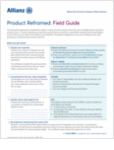Do your clients come to you for investment strategies or investment solutions?
The words you use with clients have an important emotional weight behind them, and a session at the Sage Advisory Perspectives on the Future 2015 conference offered some hard numbers to support which words you should use in your discussions with clients.
Gary DeMoss, a director at Invesco Consulting, offered four communication principles for advisors to have more productive discussions with clients who were happier at the end of them. Advisors should use these principles in their conversations, in their literature and on their website, DeMoss said.
Based on the focus group work of Frank Luntz, who tested participants’ emotional responses to language, Invesco worked with Maslansky and Partners to find out what advisors were saying that made clients and prospects shut down. They played videos of advisors talking about how they could help investors while the focus group participants measured their level of positive and negative emotions using a dial. Smaller percentages indicated anger and fear while higher percentages showed respondents were more comfortable with the language used.
The first principle Invesco’s focus group uncovered is that fear- and guilt-based language needs to go. Instead, give clients and prospects a positive, hopeful message, DeMoss said.
Invesco asked the focus group participants what they wanted an advisor to help them with: managing longevity risk, inflation risk or market risk. When the participants heard a pitch that mentioned managing market risk, the response rate fell to 37 percent (responses to inflation and longevity risk fell even lower to 19 percent and 10 percent respectively).
“What if I said it a little bit differently?” DeMoss said. “’I want to make sure that you can participate in the gains while reducing your downside risk.’” The response rate jumped to 63 percent when the statement was phrased that way. When inflation risk was rephrased as “the ability to afford to maintain your lifestyle,” the response increased to 81 percent. When participants heard they’d have enough money to support themselves for the rest of their lives, instead of longevity risk management, the response rate went up to 90 percent.
“I’m still talking about market risk. I’m still talking about inflation risk. But I’m talking about it in a way that makes people say, ‘OK, I get this now. I want to do something about this,’” DeMoss said.
The next finding is especially important considering many advisors’ move to a fee-based pricing structure. Invesco asked the participants what they least liked to pay: commissions, fees, charges or costs? “Fees” had the most negative association among the respondents. They understand there are costs associated with advisors’ services, and were much more comfortable with that word.
“They totally understand that you’re not free,” DeMoss said, “so I frame it with the word ‘cost’ and then I talk about fees.”
Another word bandied about these days is transparency, but DeMoss found that respondents had a much higher positive response to “straightforward fees” than to “transparent fees”: 58 percent versus 20 percent.
He noted that “transparency” has been hijacked by politicians over the last seven or eight years.
The second principle is to stop talking about mansions and vacation homes, and focus on plausible, credible messages. Clients aren’t looking for a dream retirement (11 percent), DeMoss said; they want a comfortable retirement (57 percent).
Should your conversations with clients focus on securing their financial freedom or financial security? Before the Sept. 11 terrorist attacks, investors were more interested in financial freedom, but today, they just want to feel secure.








 October 06, 2015 at 11:07 AM
October 06, 2015 at 11:07 AM










